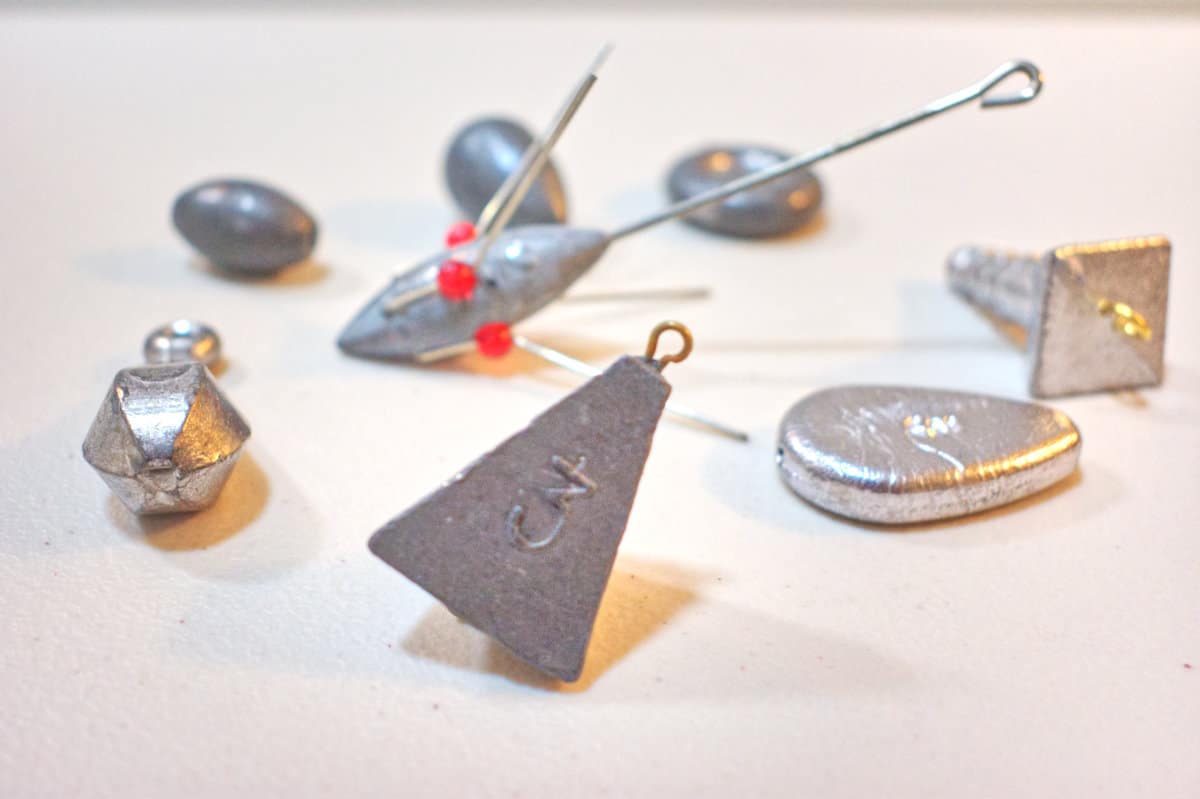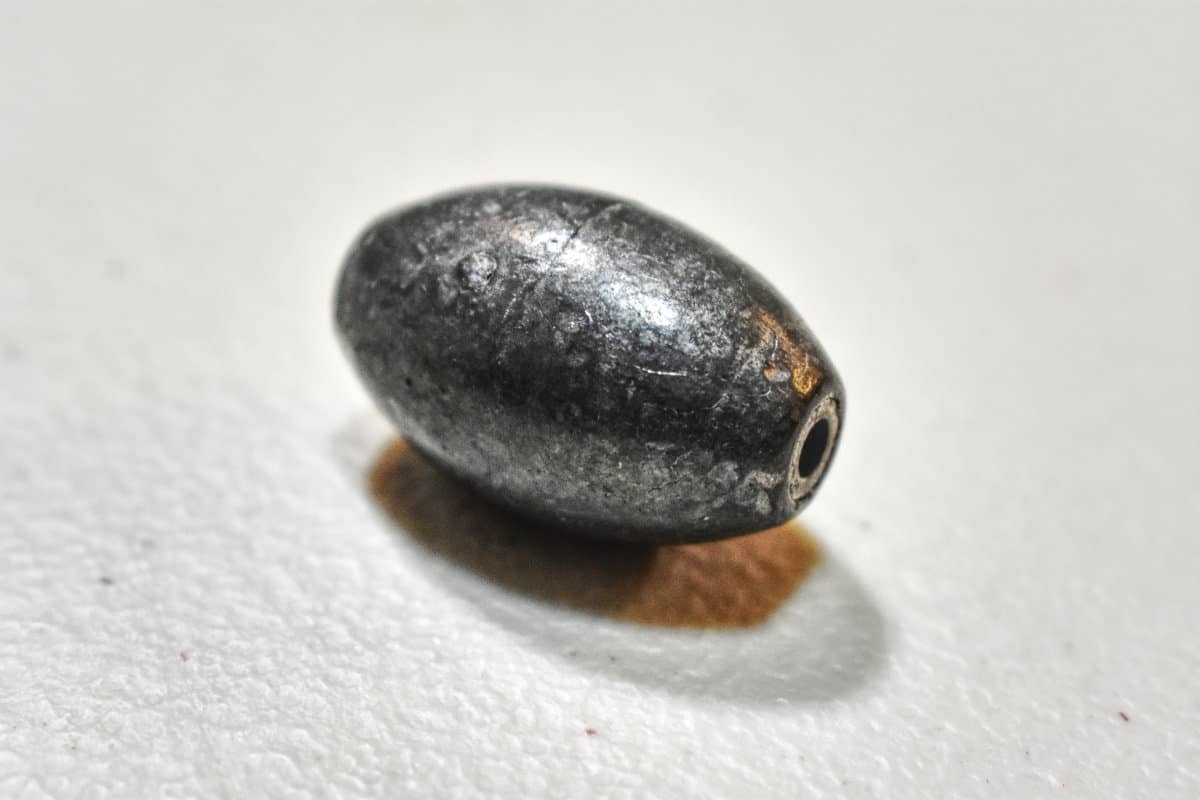If you are getting into surf fishing, you may find yourself quite literally getting into uncharted waters. I say this because that is how I felt a few years ago back when I started surf fishing.
I found out that saltwater fishing is very similar to freshwater fishing. But there are important caveats and tiny little nuances. This holds true for the entire fishing tackle you will be using, including the sinkers and the weights. So, what kind and size of sinkers for surf fishing?
for surf fishing?
A 2 to 4 oz pyramid or sputnik sinker is perfect for surf fishing in normal water conditions. When there are high surf and strong tides, it is recommended to go with a heavier sinker that suits your needs.
And here’s the thing. Sinkers come in a few different sizes and shapes. There is not going to be a one-size-fits-all kind of sinker that will be suitable for every single situation.
If you want to know more, read on as I will cover the most popularly used kinds of sinkers, and what you need to know about them in terms of size and usage.
What Kind of Sinkers Should You Use for Surf Fishing?
Choosing the right kind of sinker is the first thing you need to do to make sure you are starting off on the right foot.
1. Sputnik Sinkers

Also known as grapple sinker, it is definitely going to stand out from the crowd.
This is one of the common widely used types of sinkers. They are versatile and will keep your bait where you want it to be.
The wires on the side of the sinker will dig deep into the sand. As a result, you can expect the sputnik sinkers to sit very firmly in the sand and hold their ground even in strong water currents and big surf.
You can easily adjust the wires and bring them together if you want, and the best thing is that some sinkers will have their wires trip and open up once you start reeling it back – making the whole retrieval process a lot easier, especially if there is some structure.
They are aerodynamic and do very well when it comes to casting at long distances.
Conversely speaking, it is hard to say which one is the best sinker: the Sputnik or the Hatteras. However, with Sputnik, you definitely get the best performance to weight ratio.
2. Pyramid Sinkers

The pyramid sinkers are going to be one of the go-to choices for many anglers who are surf fishing. And one of my best choice when surf fishing.
They are, as the name suggests, shaped like a pyramid. The specialized shape of this sinker allows it to dig into the sand. However, when the fish tries to pull on the bait, it may be able to get the sinker out of the sand, at which point it may start rolling over the bottom because of the waves.
There are different kinds of pyramid sinkers. For example, they can be three-sided, four-sided, and cone-shaped. Overall this is an excellent sinker for surf fishing in sandy areas for smaller fish and does well with smaller baits.
Not very good for use in strong currents, big surf, or larger baits. This is also a sinker you need to be careful not to use in reefs as it can get stuck on the rocks.
3. Hatteras

Those of you living in North Carolina may already have some vague idea of what this sinker is usually used for.
Also known as a storm sinker, it does an excellent job of holding its place in the sand in the presence of strong currents.
It is a better choice compared to a pyramid sinker, but still not as good as the sputnik sinker.
The Hatteras may be considered one of the best sinkers for combating strong currents, but it is usually a lot heavier. In some situations, it may need to be as much as twice the weight of the sputnik sinker to provide the same effect.
4. No Roll Sinkers

No roll sinkers are mostly used for freshwater fishing and river fishing. This sinker is one of the river fishermen’s favorite.
Like the egg sinker, no roll sinker also has a hole in the center. The difference between the two, of course, no roll sinker is flat. This prevents the weight from rolling across the bottom of the surf.
5. Disc Sinkers

Disc sinkers, also known as coin sinkers, are very similar to the no-roll sinkers. They will do a relatively good job of staying in one place.
They are suitable for going after different fish species like the Surfperch. When you are reeling the line back in, the sinker will jump and kick up the sand around it as it moves to attract fish.
6. Egg Sinkers

Egg sinkers are another frequently used kind of weight that may do well for surf fishing . It flies well because they are somewhat aerodynamic and will not provide any unnecessary resistance when you are bringing them back.
. It flies well because they are somewhat aerodynamic and will not provide any unnecessary resistance when you are bringing them back.
Egg sinkers are great if you are going after perch, where you may need to keep the bait continually moving. This is my go-to sinker when using Carolina rig.
7. Casting Sinkers
The casting sinkers, also known as bell sinkers (or even bass sinkers), are great for long-distance casting. Frequently they are used for drop-shotting for bass. The shape of the weight is excellent for kicking up the sand and bouncing around as you are dragging it along the bottom.
I love this sinker due to a built-in swivel to avoid your line from twisting while retrieving it. I always used this sinker for every fishing trip, especially when I’m trying to catch surfperch or even for striped bass.
What Size and Type of Sinker is Best for Surf Fishing?
When deciding what tackle for surf fishing to use, consider the size and type of sinker. A pyramid sinker is best for holding bait in the sand, while a bank sinker is ideal for avoiding rolling in strong currents. Experiment with different sizes to find the best option for your location.
to use, consider the size and type of sinker. A pyramid sinker is best for holding bait in the sand, while a bank sinker is ideal for avoiding rolling in strong currents. Experiment with different sizes to find the best option for your location.
What Size Sinker You Should Use for Surf Fishing?
As you can see, the shape of the sinker is going to be very important when it comes to surf fishing. Depending on the water condition, you may be able to get away with some of the more common sinkers.
For example, even a very heavy bank or egg sinker may not be able to withstand the regular waves and as a result, will roll over to the beach. So, you want a sinker that is heavier, but not too heavy as your rod may not be able to able to cast it.
So, naturally, the next aspect which is going to be very important is the size, or how much the sinker weights.
1. Normal Water Current and Low Surf
For average conditions and low currents, a 2 to 3 oz. Pyramid or sputnik sinker will stick to the bottom almost all the time. A 3 oz sinker is probably the golden mean.
You want the sinker to be heavy enough so that it can dig into the sand and stay there firmly.
They can do pretty well even with 3 to 5-foot swells.
If you are casting beyond the breaking waves or the water is super calm, you may be able to get away with lighter sinkers like ¾ to 1.5 oz, but your mileage may vary.
2. Huge Surf and Strong Water Currents
There are going to be days where things will get very rough, and a standard sinker will not do you any good.
When there is huge surf or strong water currents, even 5 or 6 oz pyramid sinker may not be able to hold its ground. In these situations, if it’s too rough, I would not recommend going to surf at all. It’s too dangerous and not worth the trip.
A Few More Points on Sinkers and Surf Fishing

You can see how important the size and type of sinker can be when you are surf fishing. I personally really like the pyramid sinkers, and the disc and casting sinkers as well. But they may not always be suitable for your individual situation.
You will be facing the forces of mother nature a lot more compared to, say Stillwater fly fishing. And you need to be prepared for that.
If you are having trouble keeping your rig from being dragged away by the current, there are a few things you can do. Make sure to have at least a few differently sized sinkers handy.
That way, you can move up or down a size according to how your current rig is performing.
And sometimes we need to change the way we go about it. If, for example, you are fishing in a water inlet where there is a lot of strong currents, even a 10 oz sinker may not do anything for you.
The underwater terrain can also be the culprit for that, as in the presence of stronger currents, it can change. Try changing your fishing location by a hundred yards or so.
And last but not least, I would advise on always checking the condition of the surf and the swells. Knowing how good or bad are the conditions may end up saving you a very frustrating fishing experience.



